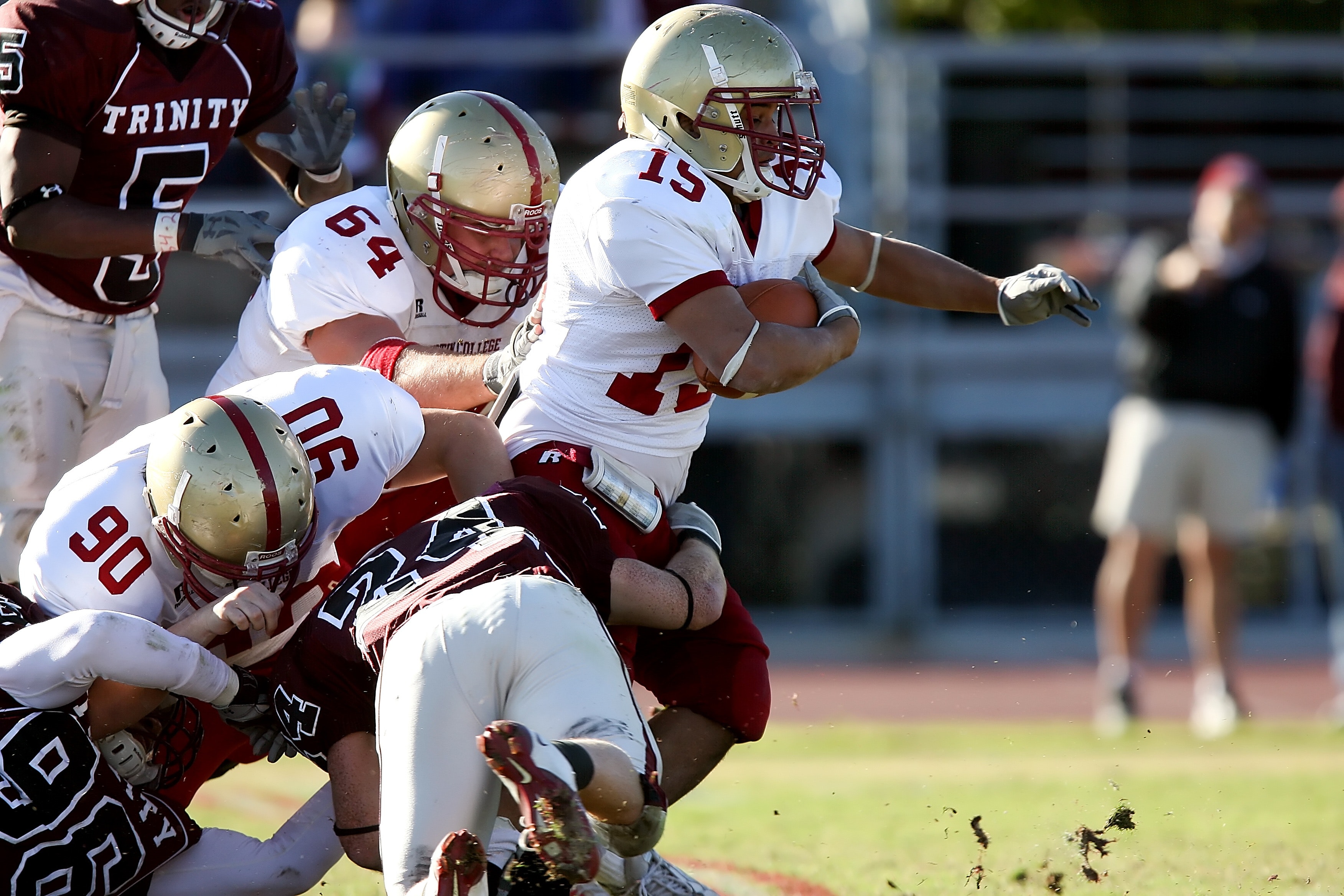Meet Ethan. Ethan is my 8 year old son and is in the 3rd grade. Like most boys his age, Ethan is active and enjoys playing multiple sports. Like many families we encourage participation in youth sports because of the many great life lessons that are learned on the field. Ethan plays baseball, golf and flag football.
Football is a wonderful sport for children. It is a sport that encourages team work, responsibility, discipline and one of the few sports where every play involves every player on the field doing their job (thank you Bill Belichick). We decided that Ethan will play flag football to minimize the risk of injury.
The collage above is Ethan and the first picture on the top left is the result of an accidental headbutt in a flag football practice. In the same flag football practice another boy suffered from a broken collarbone after falling awkwardly. Ethan likely does not suffer this injury with a helmet on and the other boy likely does not break his collarbone with shoulder pads on. And here we thought that flag football is supposed to be safe!

Ethan was examined in the office the day after the injury and his eye was found to be completely healthy. Additionally he had no signs or symptoms of a concussion. This injury led to discussions about football and injuries among family and friends. My main concern with football is repeated head injuries. I am okay with a few broken bones, bruises and scrapes as part of childhood. What I communicated to friends and families was that I was more concerned about subconcussive head injuries. I realize that many of the people I talked to did not hear of subconcussive head injuries which is what prompted this post.
I believe that the benefits of football outweigh the risks as long as we monitor for repeated subconcussive head injuries. What is a subconcussive head injury? It is a hit to the head that causes possible neurologic injury but have no visible signs or symptoms. Subconcussive head injuries are thought to be a serious concern in long term brain injury in athletes as outlined in the following research:
https://thejns.org/view/journals/j-neurosurg/119/5/article-p1235.xml?tab_body=fullText
https://academic.oup.com/brain/article/141/2/422/4815697
A sampling of conclusions from the research above is:
” These results indicate that closed-head impact injuries, independent of concussive signs, can induce traumatic brain injury as well as early pathologies and functional sequelae associated with chronic traumatic encephalopathy.”
“Such data suggest that subconcussive level impacts can lead to significant neurological alterations, especially if the blows are repetitive.”
The NFL and other football leagues are doing a great job educating the public and players about the dangers of concussion. The “Heads Up” initiative is working its way from youth football up on proper techniques to minimize the chance of concussion. Teaching athletes at an early age about the risks of head injury should reduce these instances but you will not rid of them. There are risks to playing any sport and I believe that parents, coaches and players should be aware of the risks and monitor their youth athletes closely.
Ethan’s eye healed a significant amount in the 12 days since his initial injury with no negative short term health impact. He likely suffered from a subconcussive injury due to the hit. We will be monitoring his practices and games carefully and if he suffers from more of these types of injury then we may reconsider our position.
Each family should make a decision on what they feel is best for their child. The goal of this post is to help make that decision an informed one.
Dan Press OD, FCOVD



